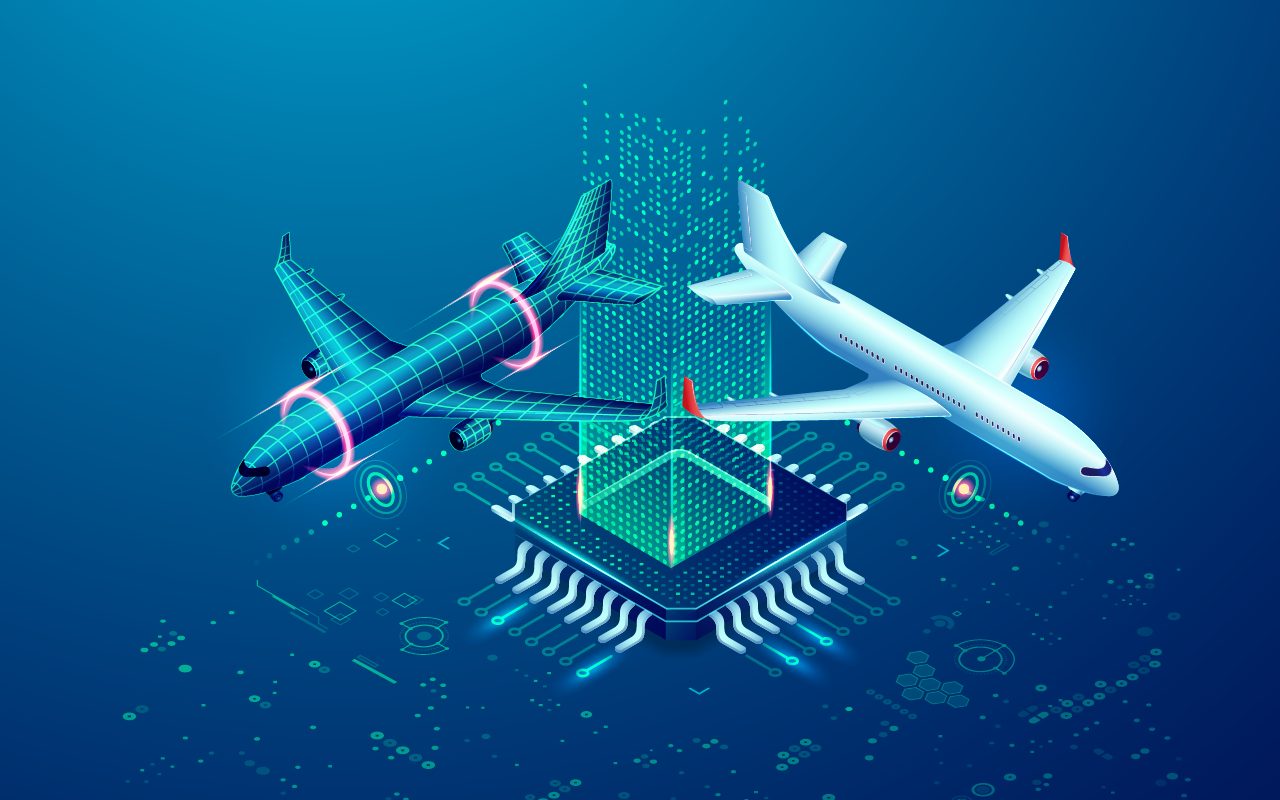Digital Twins Take Flight
The Apollo 13 spaceflight began on April 11, 1970, with great hope and anticipation to become the third crewed mission to land on the surface of the moon. But, as dramatically depicted in the Hollywood adaptation, just two days into the journey a failure ignited an explosion that rendered the ship’s service module uninhabitable. The damage forced the three astronauts into a lunar module which was only intended to hold two crew members.
A digital twin is a digital representation of real-world entity. Digital twins are useful because they allow users to simulate a variety of potential occurrences in a controlled environment. Applications today are numerous and include use cases in a range of industries spanning oil and gas, manufacturing, transportation and much more. In our NAVIK AI platform, we use digital twins to simulate the nuances of thousands of different restaurant establishments to simulate what an ideal beverages assortment would look like for any given location.
It’s Not Rocket Science, Digital Twins of the Customer
An interesting idea in the context of the Apollo 13 space mission is that the mission became a very early – arguably even the first – example of a digital twin application. NASA built simulators that were quite sophisticated for their time. These simulators were designed for mission training, but after the accident, they were used for simulating optimal mission response to the unanticipated constraints NASA now faced. This excellent blog from Siemens goes into great depth on how the simulators were effectively used as a digital twin, saving the lives of the three astronauts.
The Apollo 13 mission took place over 50 years ago. Over that time, the core concept of a digital twin – a virtual representation of a real-world entity – has not changed. But dramatic technology developments have made digital twins more valuable than ever. A few months ago, I wrote about how digital twins have catapulted into relevancy for consumer sales and marketing teams. Here, I will emphasize the three key technology enablers of Digital Twins of the Customer (DToC).
These include:
- Data collection innovations
- Data connectivity and storage improvements
- Data modeling enhancements
Data Collection Innovations
Digital twins of physical objects have benefitted from tremendous innovations in sensor technologies. A deep dive on this topic is outside of the scope of my expertise, but think about technology breakthroughs including LIDAR and MEMS accelerometers which have enabled machines to sense the world in ways that were not possible during the time of the Apollo 13 mission.
This same ability to capture data on an entity of interest can be observed in the consumer marketing world. With an explosion of online activity consumers leave an associated digital footprint. From website browsing behaviors, to digital marketing engagement, to purchase history and so much more, marketers have more useful data at their fingertips than at any time in history.
Data Connectivity and Storage Improvements
In the physical world, the explosion of 5G connectivity, satellite connectivity and general network ubiquity has made possible use cases that could only previously be dreamed of. In the consumer world, we can see the same pattern – connecting systems of record with systems of engagement is easier than ever. Similarly, it is now feasible to move all of this data around at the speed of light thanks to network innovations and the maturation of data connectors such as APIs and data pipeline tools and scripts. Finally, we can store all of this data in highly accessible ways with dramatically less expenditure than ever before.
Data Modeling Enhancements
It is not enough to generate, connect and store data. Algorithmic enhancements are the most important ingredient in the DToC recipe book. The rapid advancement and availability of machine learning algorithms have unlocked unprecedented value for consumer marketers. Supervised, unsupervised and reinforcement models are transforming how products are designed, marketed, and sold. These models are now able to ingest massive amounts of data, iterate at scale, and generate powerful insights.
Houston, the Solution is Digital Twins of the Customer
In a moment of need, flight simulators that were designed to train astronauts for the Apollo 13 mission became a Digital Twin that allowed NASA to experiment with creative solutions to an unexpected problem and ultimately save the lives of three astronauts. Today, this concept has evolved but essentially, digital twins remain a digital model of a real-world asset. The model is informed by sensors that generate data, connectivity that gathers the data and algorithms that make sense of changes happening to the object being measured.
In our digital age, this identical concept is creeping into the consumer sales and marketing world. The three key technology enablers are already mature: the data is at your fingertips, it can easily be moved and stored, and machine learning models can make sense of it in real time. Marketers should take note, the time to begin developing Digital Twins of your customers is now.
Authored by: Marc Jacobson, Vice President, NAVIK Strategy and Product Management at Infogain
Related Absolutdata products and services: NAVIK AI Platform, NAVIK Sales AI, NAVIK Marketing AI, NAVIK Digital Twin, Analytics, Data Science & AI































